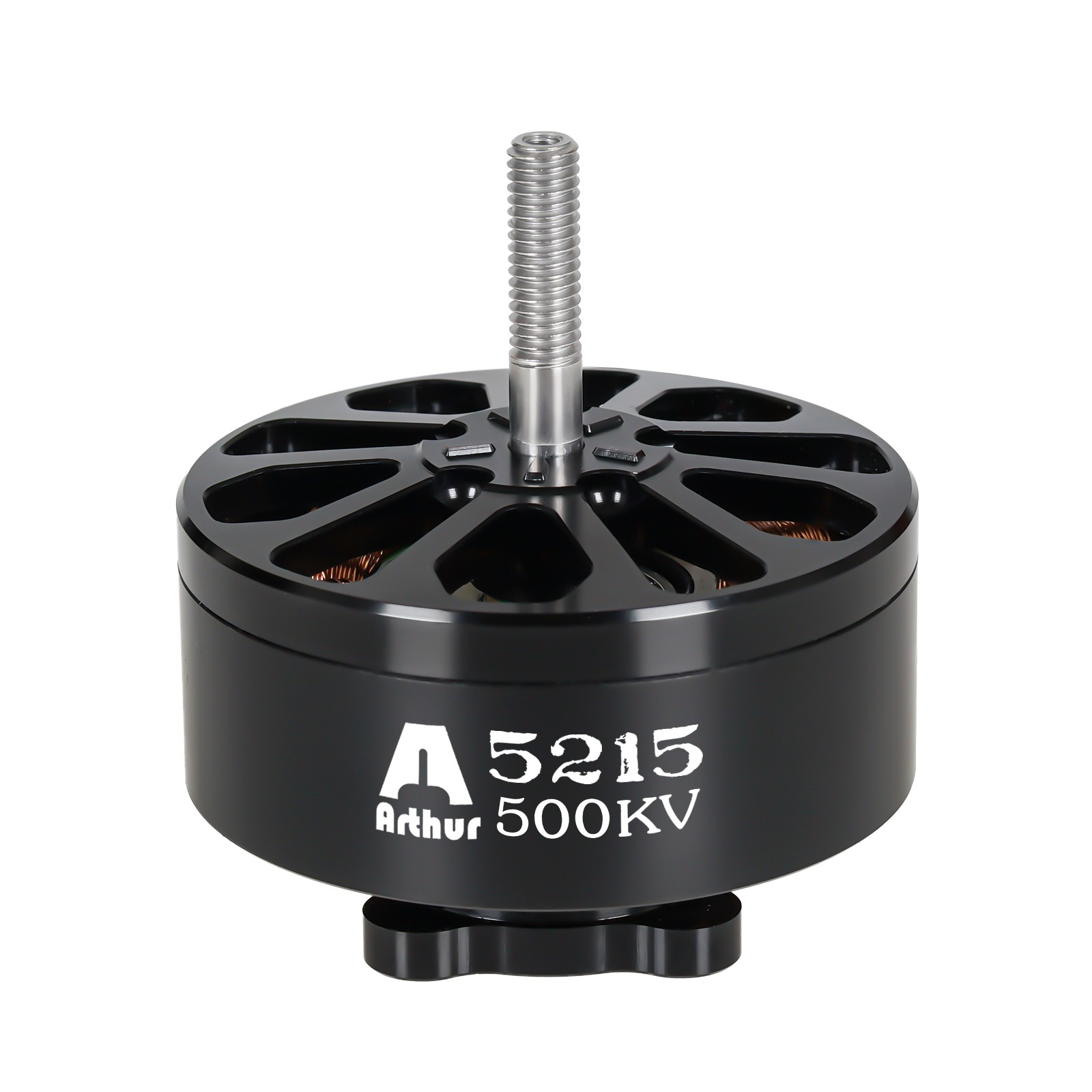Everything You Need to Know About Brushless DC Motors: A Complete Guide
2025-01-13
What is a Brushless DC Motor (BLDC)?
A Brushless DC motor (BLDC) is a type of electric motor that operates without the use of brushes. Unlike traditional brushed motors, BLDC motors rely on electronic controllers to switch the current in the motor windings, generating magnetic fields that cause the rotor to rotate. This design eliminates the friction and wear associated with brushes, making BLDC motors more efficient, reliable, and longer-lasting than their brushed counterparts.
How Does a Brushless DC Motor Work?
A Brushless DC motor operates using the interaction between the stator (the stationary part) and the rotor (the rotating part). The stator contains coils of wire that are powered by an external electronic controller. The controller supplies current to the stator windings in a sequence that creates a rotating magnetic field. This magnetic field interacts with the rotor, which contains permanent magnets, causing the rotor to spin.
Since there are no brushes to create friction or wear down over time, BLDC motors are more durable and efficient than brushed motors. The controller manages the switching of the current to ensure the rotor keeps spinning smoothly.
What Are the Advantages of Brushless DC Motors?
Brushless DC motors offer several significant advantages over traditional brushed motors:
1. Higher Efficiency: Without the friction and energy loss from brushes, BLDC motors are much more energy-efficient, converting more electrical energy into mechanical motion.
2. Longer Lifespan: The absence of brushes reduces wear and tear, resulting in a longer operational life. BLDC motors can run for thousands of hours with minimal maintenance.
3. Quieter Operation: BLDC motors are quieter than brushed motors because they lack the noise created by the brush-commutator system.
4. Less Maintenance: Since there are no brushes to wear out, BLDC motors require far less maintenance compared to brushed motors, making them more cost-effective over time.
5. Better Performance: BLDC motors provide smooth and precise control over speed and torque, making them ideal for applications requiring high performance, such as robotics, drones, and electric vehicles.
6. Compact and Lightweight: BLDC motors are often smaller and lighter than their brushed counterparts, which is an important feature for applications like drones or portable devices.
What Are the Common Applications of Brushless DC Motors?
Brushless DC motors are used in a wide variety of applications due to their efficiency, reliability, and performance. Some common uses include:
1. Electric Vehicles (EVs): Many electric vehicles use BLDC motors because of their efficiency, durability, and ability to provide precise control over speed and torque.
2. Drones and UAVs: Drones use BLDC motors because they provide the power, precision, and longevity needed for flight, without the weight and maintenance issues associated with brushed motors.
3. HVAC Systems: BLDC motors are used in heating, ventilation, and air conditioning (HVAC) systems for efficient airflow control and longer-lasting operation.
4. Robotics: Many robotic applications, such as robotic arms and automated machines, use BLDC motors for precise motion control and reliability.
5. Computer and Mobile Devices: Hard drives, cooling fans, and other devices in computers and smartphones often use BLDC motors due to their small size and low noise.
6. Home Appliances: Devices like washing machines, air purifiers, and vacuum cleaners often incorporate BLDC motors to improve performance and energy efficiency.
What Are the Disadvantages of Brushless DC Motors?
While brushless DC motors have many advantages, there are also some disadvantages to consider:
1. Higher Initial Cost: BLDC motors tend to be more expensive to produce than brushed motors due to their more complex design and the need for electronic controllers.
2. Complexity: The need for an external electronic controller adds a layer of complexity to the system. This can make the motor more difficult to integrate into simple applications.
3. Sensitive to Temperature: BLDC motors can be sensitive to extreme temperatures, which may affect performance or even damage the motor in some cases.
4. Require Electronic Controllers: Unlike brushed motors that are powered directly by DC voltage, BLDC motors require sophisticated controllers to manage the motor’s operation. This adds to the system's overall cost and complexity.
How Are Brushless DC Motors Controlled?
Brushless DC motors are controlled by an electronic speed controller (ESC) or a motor controller. These controllers manage the timing and switching of the current in the motor windings to generate the magnetic field needed to rotate the rotor.
1. Commutation: The controller determines the commutation (the sequence of current switches) based on the rotor's position. This is usually done with sensors, such as Hall effect sensors, that detect the rotor's position and send this information to the controller.
2. Speed Control: The controller regulates the speed of the motor by adjusting the frequency of the current switching, which in turn controls the speed of the rotor.
3. Torque Control: The controller also manages the amount of current flowing to the motor to control the torque, or rotational force, produced by the motor.
How Do I Choose the Right Brushless DC Motor for My Application?
Choosing the right BLDC motor depends on several factors:
1. Power Requirements: Consider the power (voltage and current) required for your application. High-power applications, like electric vehicles, need motors with higher voltage ratings, while low-power applications may require smaller, more compact motors.
2. Size and Weight: The size and weight of the motor are critical for applications like drones or robotics, where weight is a limiting factor.
3. Speed and Torque: Determine the required speed (RPM) and torque (rotational force) for your application. For instance, robotics may require high torque and low speed, while drones need high-speed motors.
4. Efficiency: If energy efficiency is crucial, such as in electric vehicles or renewable energy systems, choose a motor that offers the best power-to-weight ratio and low energy consumption.
5. Operating Environment: Consider the operating environment, including temperature range, humidity, and the potential for dust or moisture. Choose a motor that is rated for the conditions it will operate in.
6. Control System: Ensure that you have the right electronic controller to match the motor’s specifications and manage its performance effectively.
What Are the Future Trends for Brushless DC Motors?
Brushless DC motors are constantly evolving, and several trends are shaping their future:
1. Smarter Controllers: As technology advances, electronic controllers are becoming more sophisticated, offering better performance, energy efficiency, and ease of integration.
2. Miniaturization: As demand for smaller, lightweight devices grows, BLDC motors are being developed in even smaller sizes, making them ideal for wearable technology, medical devices, and more.
3. Integration with IoT: Brushless motors are being integrated with Internet of Things (IoT) systems, allowing for remote monitoring and control, predictive maintenance, and real-time data analysis.
4. Higher Efficiency: Ongoing research aims to further improve the efficiency and performance of BLDC motors, making them even more suitable for applications like electric vehicles, where energy efficiency is a key concern.
Conclusion
Brushless DC motors are a popular choice for a wide range of applications due to their efficiency, durability, and performance. While they may come with a higher initial cost and require a more complex control system, the long-term benefits in terms of maintenance and energy efficiency often outweigh the drawbacks. Whether you're building electric vehicles, drones, or advanced robotics systems, understanding how to select and use BLDC motors can help you unlock superior performance and reliability in your projects.



